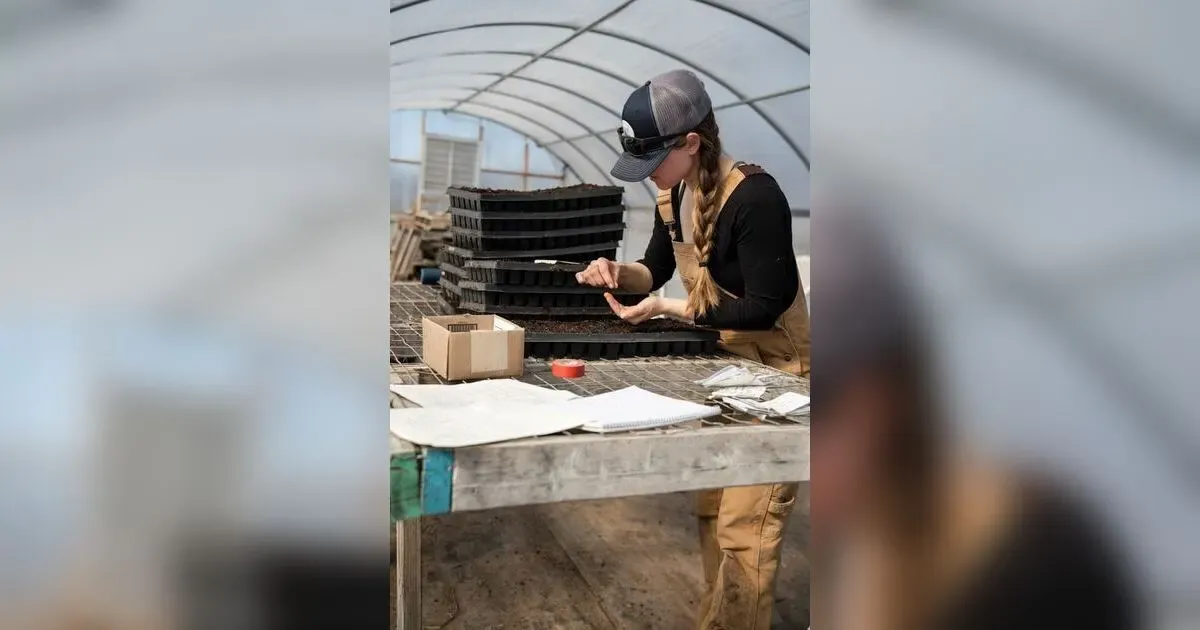Discover the ultimate guide to home greenhouse gardening, from seed selection to bountiful harvests. Master the art of cultivating vibrant plants year-round with expert tips on greenhouse setup, climate control, pest management, and more. Elevate your gardening experience and transform your greenhouse into a flourishing oasis.
Introduction
Greenhouse gardening; is a fulfilling hobby and an excellent practical way to grow beautiful flowers, plants and more at any time of the year irrespective of the prevailing harsh environmental conditions. With the use of a greenhouse, you are able to have more time in a year for planting, to grow plants that cannot endure the outside climate and frost, and to get big yields in the few months before a Freezing and Winter sets in. This guide will begin from the very first steps of being a gardener through to having your flowers bloom and giving you fruits or vegetables as a end product. As you progress, you’ll find out what kind of environment all of the organisms in the greenhouse want, and how to make all of the plants you’re growing excel and give you their best.
When you get into this, you will find that greenhouse gardening is more of an art than a science in that you have to balance the factors in a particular environment. It is not just the business of sowing seeds and then waiting for them to sprout; it is about the management of very soil, air and light so that plants will grow in the best possible way. In understanding as the soil makeup as the climate differentials, with this guide you will have the tools needed to create a thriving environment in your greenhouse. After going through this guide, you will have not only learnt the challenges of greenhouse gardening but the ability to create a greenhouse garden that depicts your personality and interests.
1. Choosing the Right Greenhouse: Size, Materials, and Location
It is important to understand factors that lead to selection of a right greenhouse structure before starting greenhouse gardening. Among other factors, size is very essential; regardless of the compact mini-greenhouse or a huge freestanding facility you choose, you will meticulously feel the difference. A small greenhouse may be suitable for the first time growers or the people with limited area available to put the structure to use, the negatives include that they are relatively easier to maintain and are cheap to construct. On the other hand, the large greenhouse offers more space for requiring various types of plants; in other words, the chances for trials as well as the possibility of harvests throughout the entire year are better. The option between having a freestanding greenhouse and having an attached one is also a very significant one as each type has some strong points concerning accessibility and heat conservation and compliance with the general look of the house.
Just like any other form of gardening, the basic strategy to greenhouse gardening therefore revolves around selecting the best structure to grow with. When choosing a greenhouse some of the things to consider include; size, kind of plants to be grown and the climatic conditions of the area. Freestanding greenhouses provide optimum light which is not possible in the case of those greenhouses attached to a house; however, the structures enjoy the heat from the house. The kind of materials used in your greenhouse range from glass, a material that offers a robust feel of the valuables inside to the polycarbonate panel material that offers insulation. Just as important is the place, as deciding to put the site where there is a lot of sun, no powerful wonderful winds, and where there is water will contribute to the growth of a fantastic garden.
Just like any other form of gardening, the basic strategy to greenhouse gardening therefore revolves around selecting the best structure to grow with. When choosing a greenhouse some of the things to consider include; size, kind of plants to be grown and the climatic conditions of the area. Freestanding greenhouses provide optimum light which is not possible in the case of those greenhouses attached to a house; however, the structures enjoy the heat from the house. The kind of materials used in your greenhouse range from glass, a material that offers a robust feel of the valuables inside to the polycarbonate panel material that offers insulation. Just as important is the place, as deciding to put the site where there is a lot of sun, no powerful wonderful winds, and where there is water will contribute to the growth of a fantastic garden.
2. Preparing the Greenhouse: Soil, Containers, and Climate Control
Thereafter, laid a platform where plants are to grow and this starts with planting on the right soil once one has erected the structure of the greenhouse. Natural substrates with good drainage supplemented with the best fertilizer/food suited to plant species would allow the plants to get all they need and none of them should be waterlogged. Raised beds or containers can be used and placed in ways that make optimal growth and easy access to the plants. Heating, Ventilation, and air conditioning (HVAC) is the key to greenhouse gardening because when properly used, it will mimic the best weather condition that each plant species requires to grow. Ideal temperature, humidity and air movement will help maintain the environment of the greenhouse so as to act as a center for plant growth all year round.
3. Starting with Seeds: Selecting, Sowing, and Germination
To get from a seed to plant requires proper selection of seeds, which are usually chosen according to their capacity to grow in greenhouses. Bear in mind your local climate, also, the conditions that you are able to offer in a greenhouse. Seeding is more a fine science with regard to spacing of the seeds, how deep they should be placed and what humidity level should be maintained for efficient germination. It is here that a greenhouse gives you a particular advantage mainly because you can now control the conditions for temperature and light which will force even the most picky seeds to grow. The most satisfying sight any gardener can earn is watching seeds grow and mature into strong seedlings which will transform into productive plants.
4. Plant Care: Watering, Feeding, and Pruning
As implied by the foregoing analysis, the health of the plants in the greenhouse is determined by care whereby the gardener has to pamper his plants. Irrigation of the plants under a glass structure in a green house is a delicate balancing proposition: whilst one should avoid flooding them in a way that thereby leads to rotting of root systems, which when this happens, the system inhibits the growth of the plants. Effective watering of plants entails using drip irrigation set up or hand-watering the plants in a way to make sure that each of them is watered adequately. Watering your plants is also a crucial factor in its growth—knowing the right time to add fertilizers and which nutrients to apply gets to work wonders in the production of the best yield. Pruning is not merely about the appearance of the plants; it is about the overall exposure of the plant to light and air and the focus of the plants energy to produce fruits. Learner these techniques will enhance your greenhouse to one of the attractive and productive structures.
5. Pests and Diseases: Measures of control and prevention
In the climatic control of a greenhouse, the pests and diseases have the ability to invade the place affecting the plants in the process. Prevention is important—routine monitoring and the early detection of such conditions means that they don’t graduate to full blown infestations. AIPM (agricultural integrated pest management), which focuses on the use of bio control, organic control and also chemical control if and when required should maintain the ecosystem of a greenhouse. Think about companion planting that repels pests, and sanitation inside the greenhouse to minimize on diseases. Read on the following paragraphs, as we elaborate on how you can avoid pest and diseases in your plants:
6. Harvesting and Beyond: Reaping the Rewards of Your Work
Harvesting could then be seen as the final fruits of month long hard work and determination, a reward of sorts of the cycle of life of plants. That is why timing is important: if the produce is picked too early it may be of inferior quality and give less yield; if picked too late it may be already overripe or rotten. Different kinds of plants have different cues that inform them that the time for harvesting is right; whether it is the hardness of a tomato or the color of a pepper. However, think past reaping for ways on how to enjoy and store your fruits competently. Good news is that there are many ways to prolong the pleasure of eating your crops even well beyond the summer: drying, canning or freezing, to name a few. Accept this stage as the finale of greenhouse gardening and prepare for the next round of your home grown crave.
Conclusion
Finally, it is clear to see that this is not a one shot ordeal but instead a slide show that progresses throughout time. Regardless of the season, there are always new chances to improve the skills and test new plant combinations while knowing the greenhouse environment better. The experiences you have acquired – and it begins from selecting an appropriate greenhouse to comprehending the difficult aspects of plant care, prepare you to handle more complex situations in the future. The flexibility is in realising that greenhouse gardening can be tailored to your needs and your current aims and dreams whether you wish to grow a broader range of crops, gain an earlier start and/or a longer year-round production or if, in fact, what you desire is a peaceful oasis that contains plants.
In future, the cycle of greenhouse gardening tells you that it is okay to have that kind of thinking, where every harvest is a culmination of the previous work, but also a starting point for a new one. For any season you have the opportunity to modify on the successes and the failures, making incremental improvements to the greenhouse conditions. This continuous cultivation, observation and innovation is what makes the greenhouse gardening fascinating and yielding all the time. With this chapter to see the end of the growing year, count the small triumphs you have gotten and look forward to the new opportunities that come in the greenhouse – a place where the gardening fantasies come to reality, every season.


























